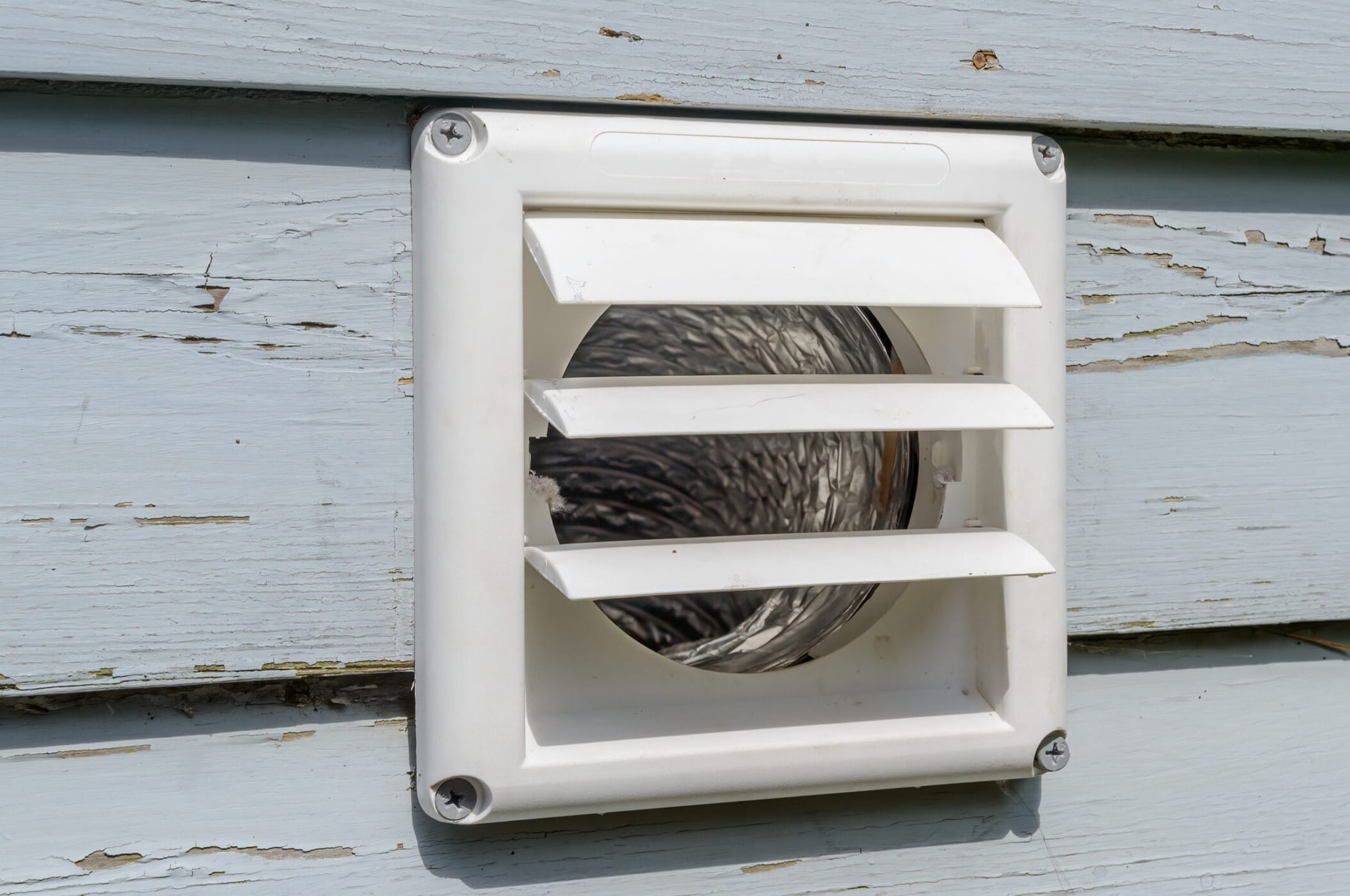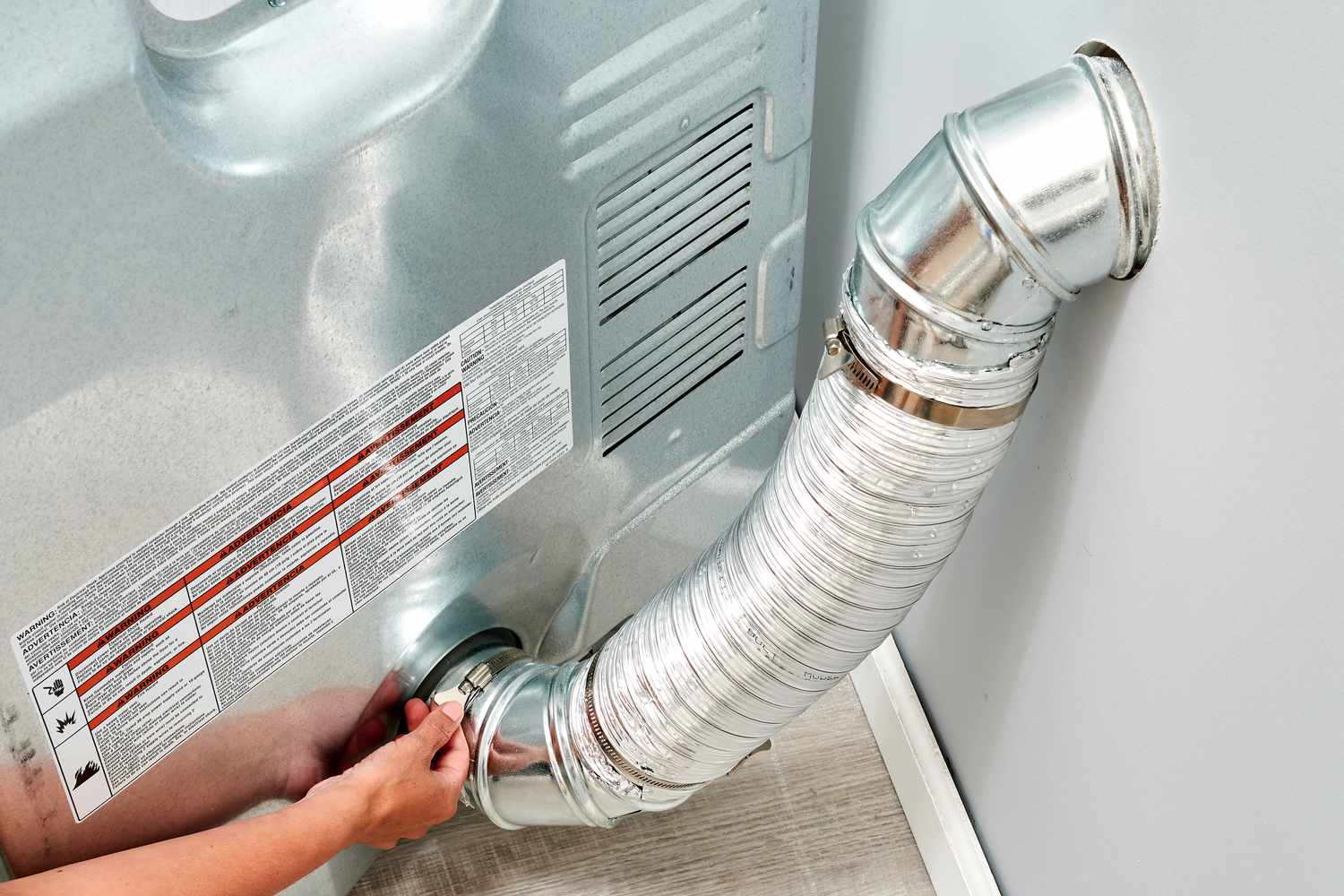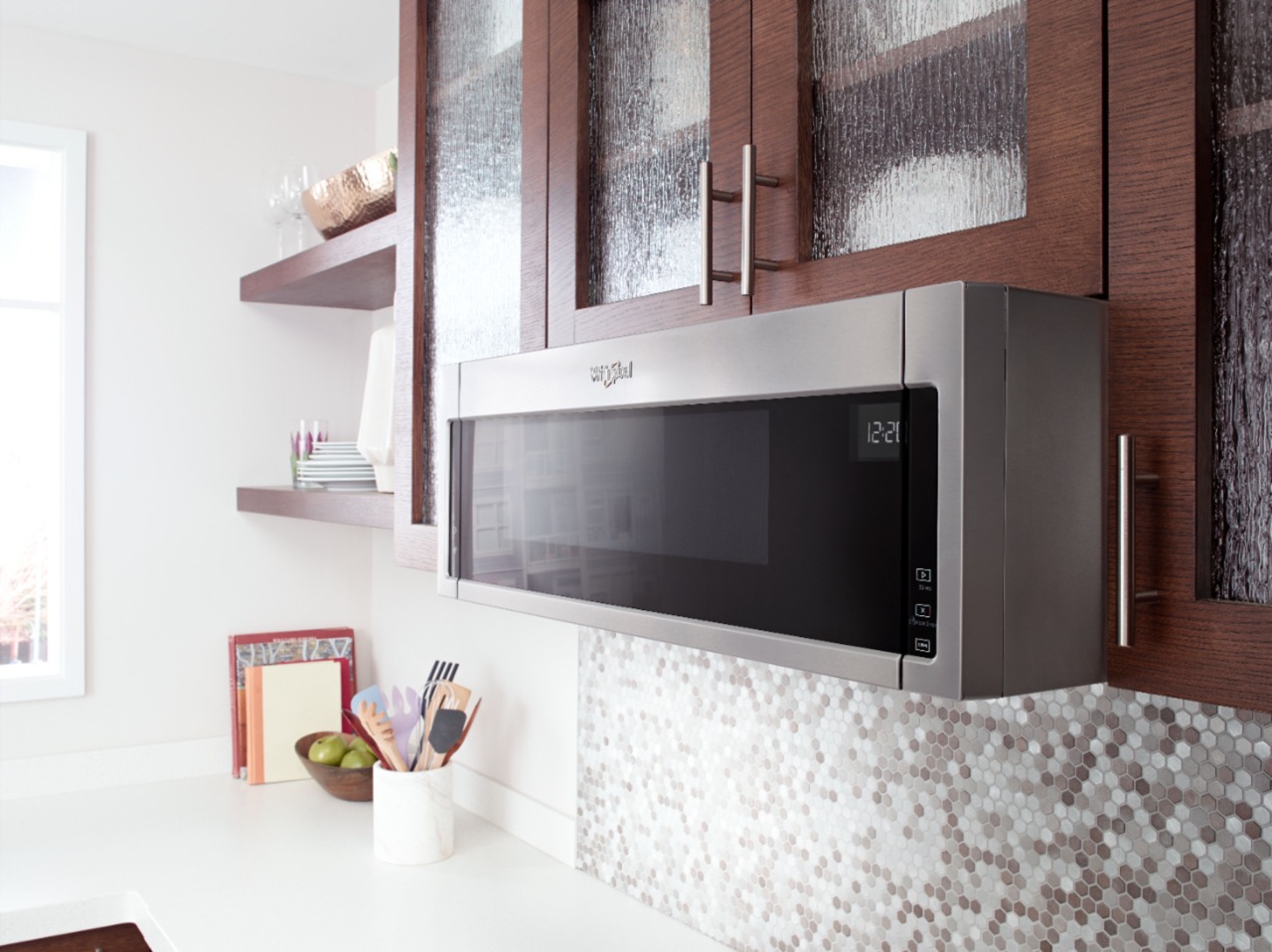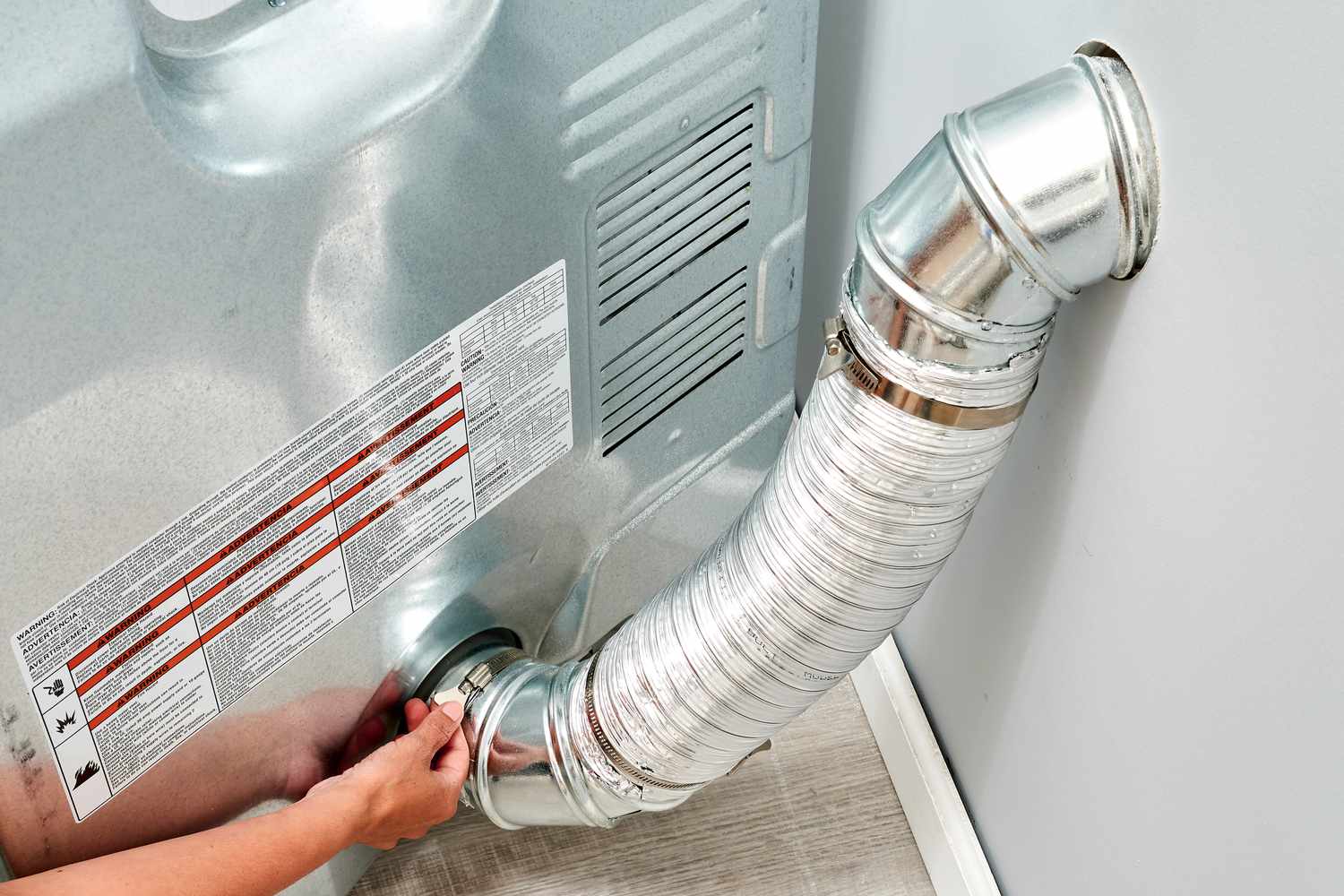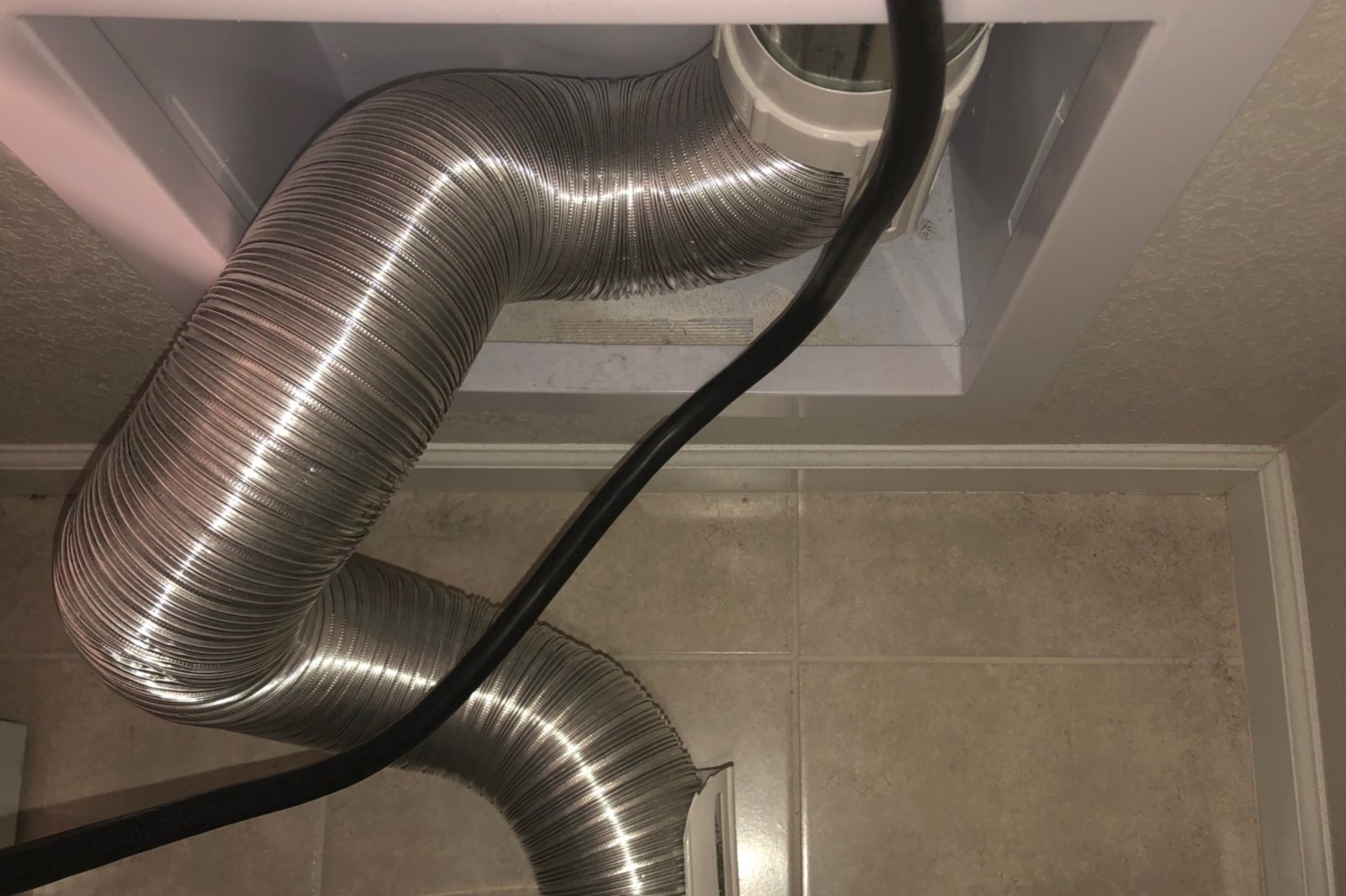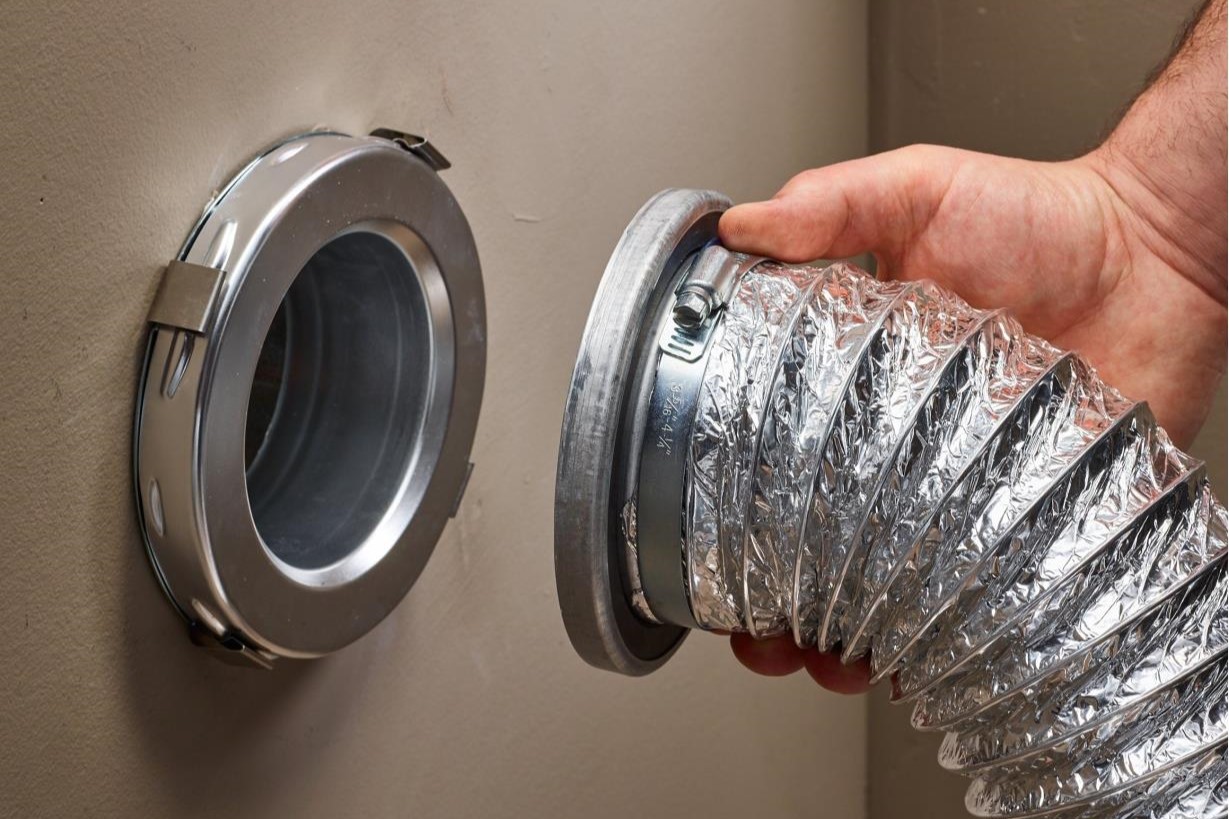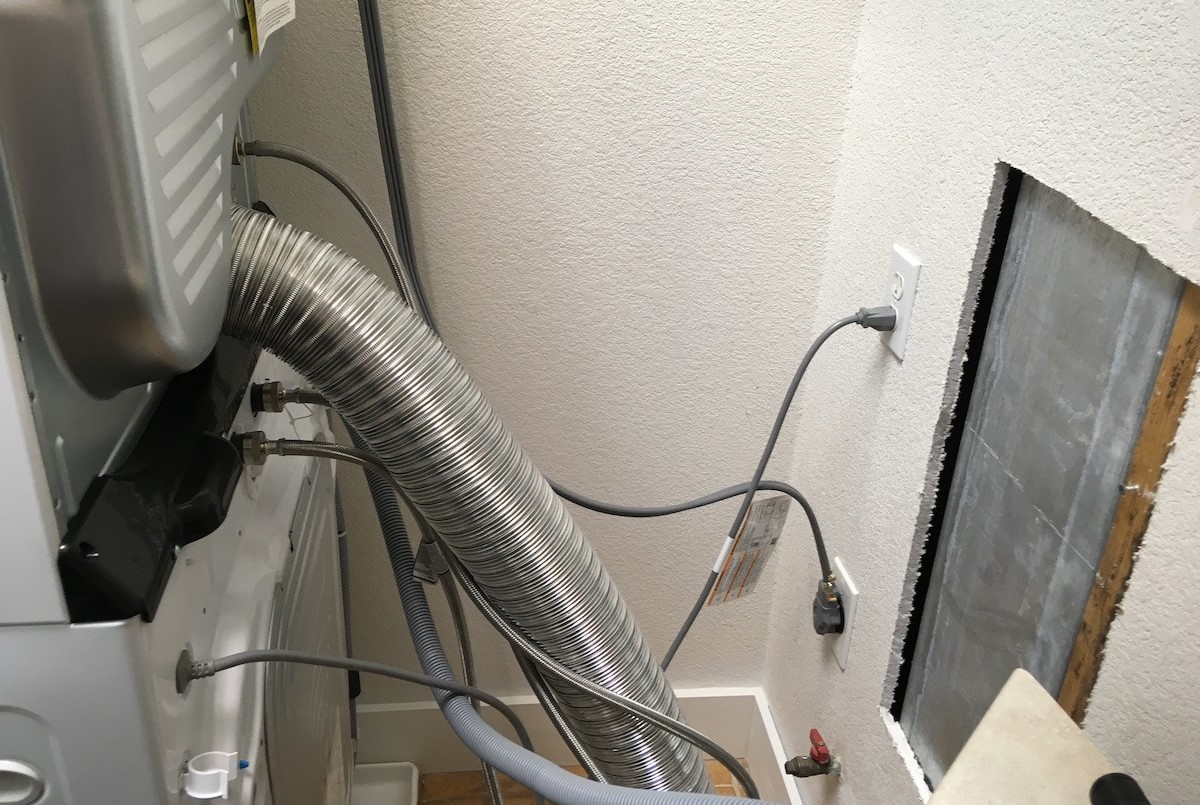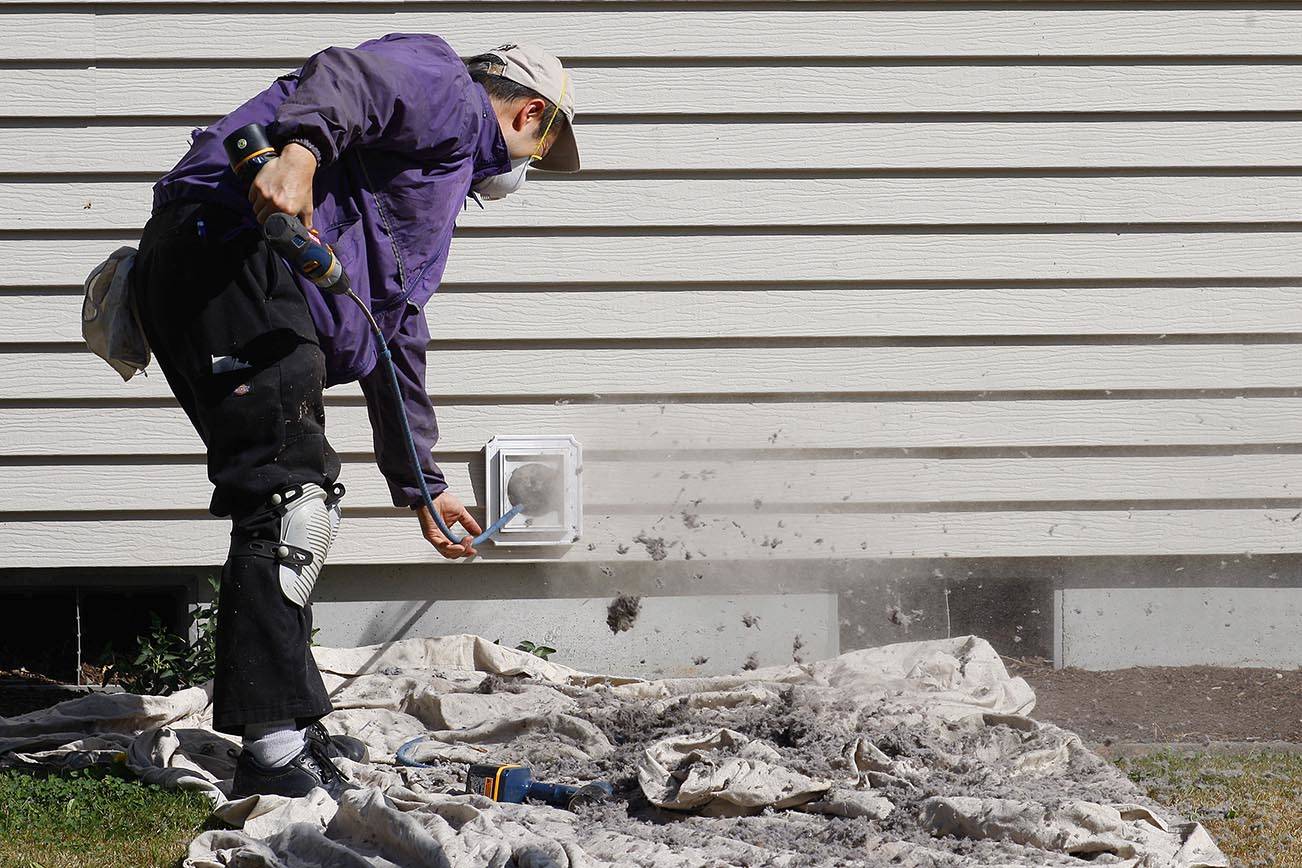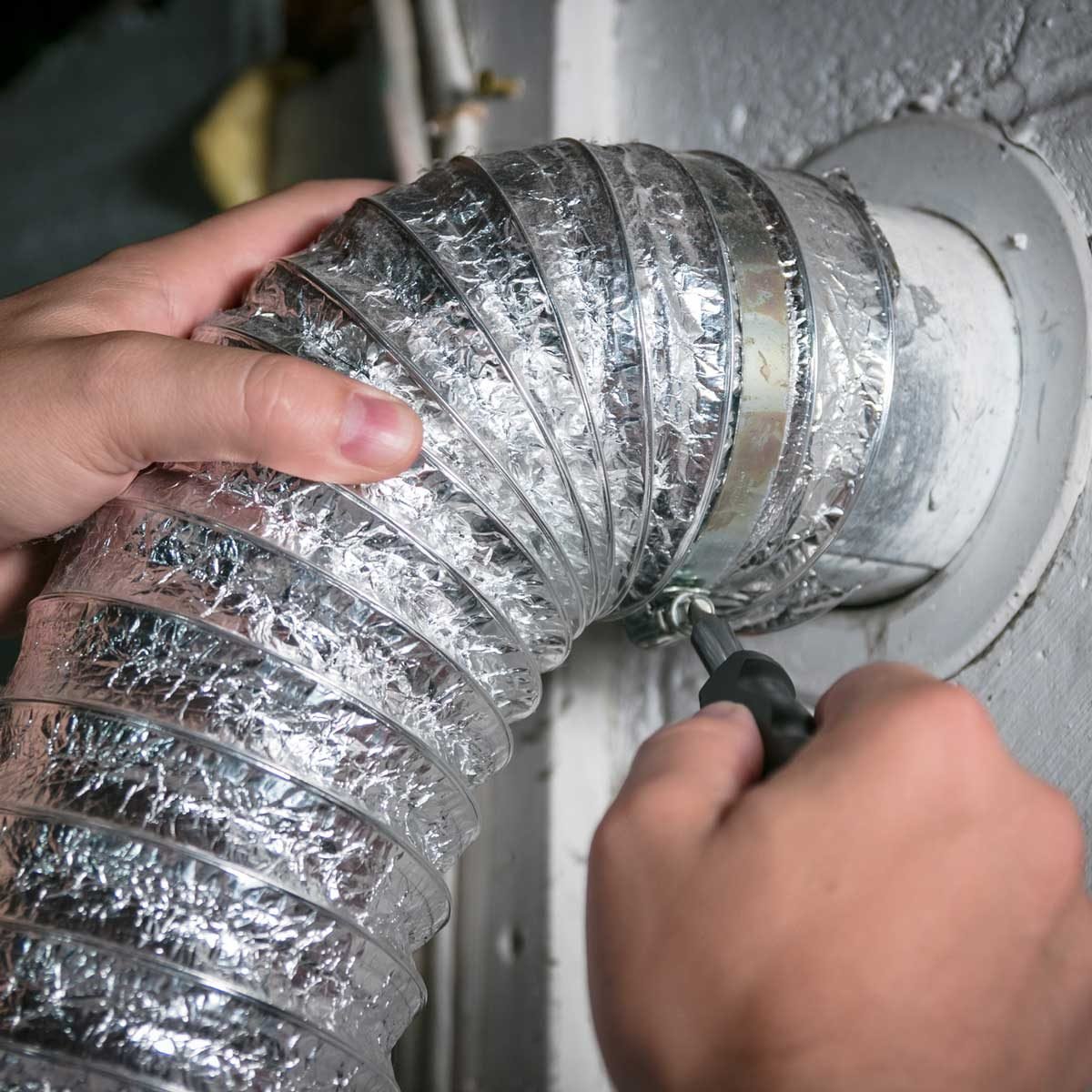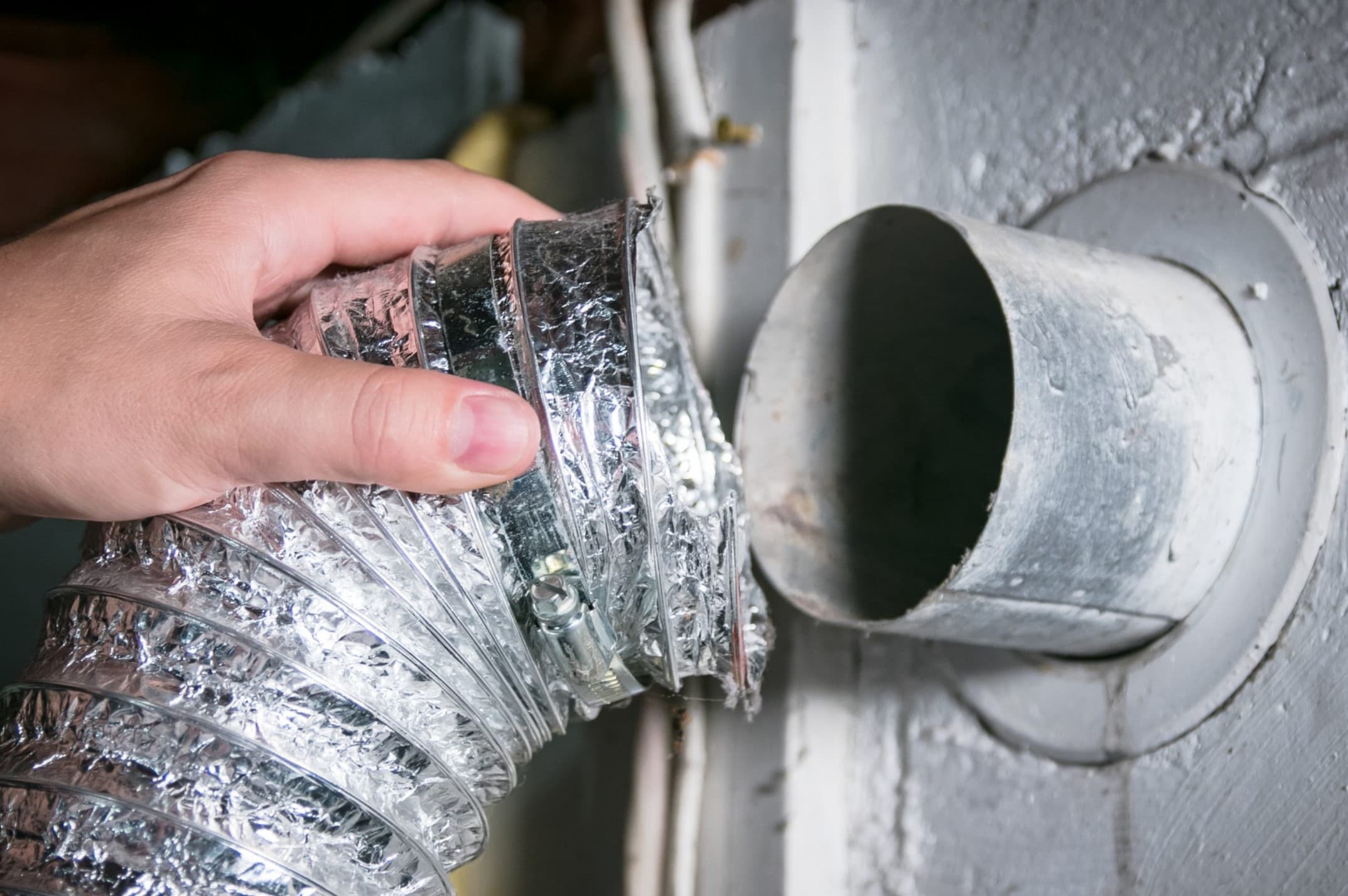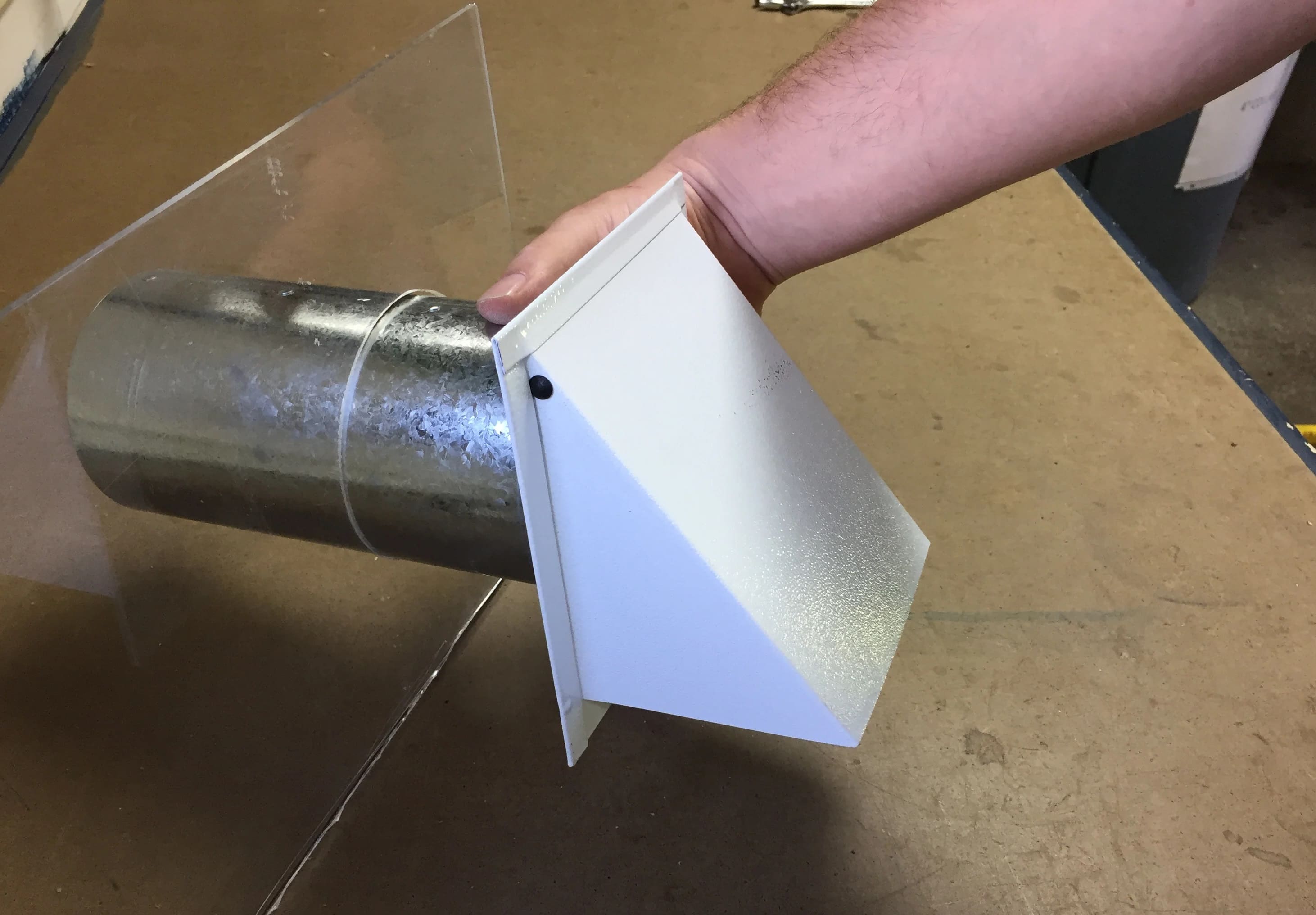Home>Home Maintenance>How To Find A Dryer Vent Outside
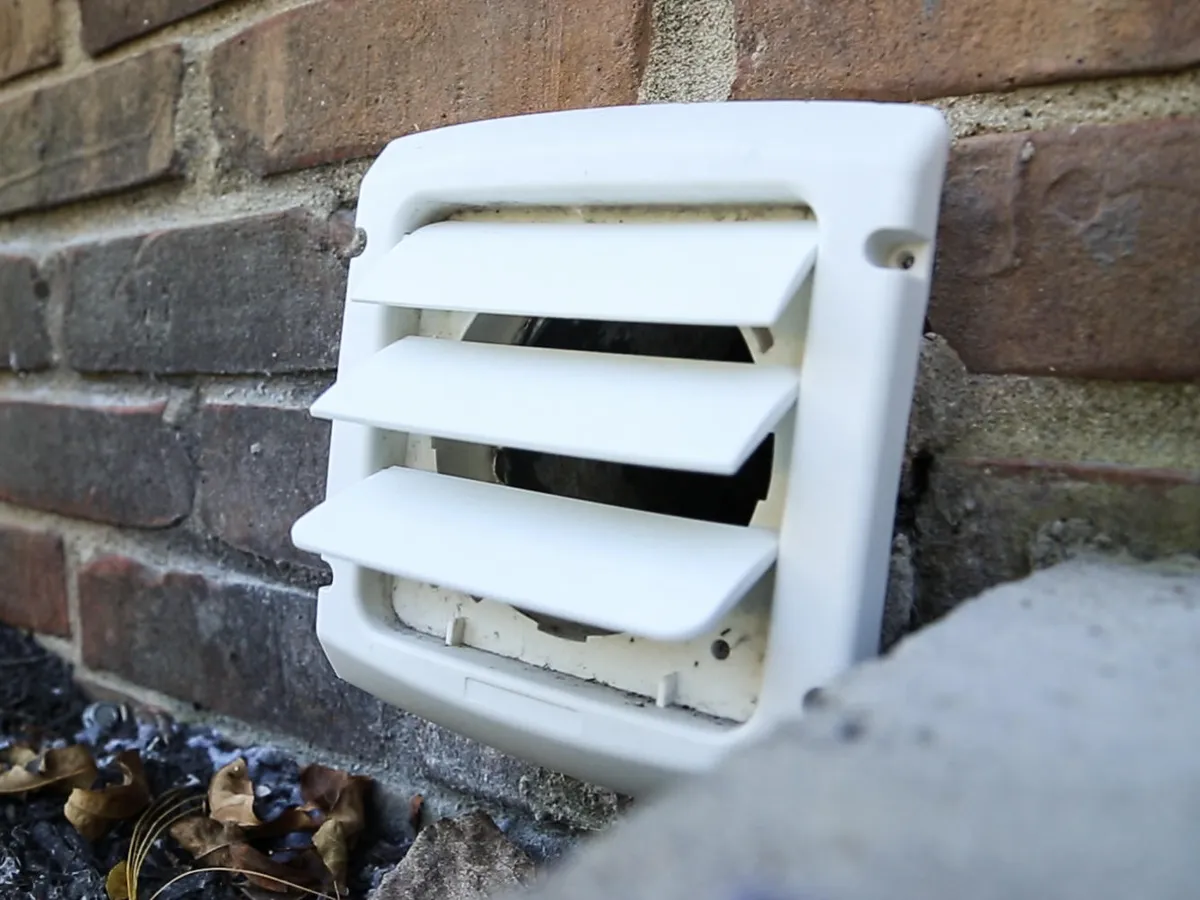

Home Maintenance
How To Find A Dryer Vent Outside
Modified: October 20, 2024
Learn how to find a dryer vent outside your home and ensure proper home maintenance. Discover tips and techniques for locating and maintaining your dryer's ventilation system.
(Many of the links in this article redirect to a specific reviewed product. Your purchase of these products through affiliate links helps to generate commission for Storables.com, at no extra cost. Learn more)
Introduction
When it comes to maintaining your home, one often overlooked component is the dryer vent. A properly functioning dryer vent is crucial for the efficient operation of your dryer and for maintaining the safety of your home. However, finding the dryer vent outside can be a challenging task, especially if you are unfamiliar with its location.
In this article, we will guide you through the process of finding a dryer vent outside. We will explain why it is important to locate the vent, and provide you with a step-by-step guide to ensure you can easily find it without any hassle.
Having a thorough understanding of your home’s dryer vent system can help you prevent potential issues such as lint buildup, poor ventilation, and even fire hazards. By regularly inspecting and maintaining your dryer vent, you can ensure that your dryer operates efficiently, your clothes dry faster, and your home remains safe.
So, let’s dive into the importance of finding a dryer vent outside and the steps you need to take to locate it.
Key Takeaways:
- Regularly locating and maintaining your dryer vent outside is crucial for efficient drying, preventing fire hazards, and ensuring home safety.
- By understanding the importance of finding the vent and following the steps outlined in this guide, you can easily maintain the functionality of your dryer vent system.
Read more: How To Cover A Dryer Vent Outside
Importance of Finding a Dryer Vent Outside
Understanding the importance of finding a dryer vent outside is crucial for the proper functioning of your dryer and the overall safety of your home. Here are a few reasons why locating your dryer vent is essential:
- Preventing Lint Buildup: One of the primary functions of a dryer vent is to safely remove lint and moisture from your dryer. Over time, lint can accumulate in the vent, obstructing the airflow. This can lead to decreased performance, longer drying times, and even potential fire hazards. By locating and regularly cleaning the vent, you can prevent lint buildup and maintain optimal dryer performance.
- Ensuring Efficient Operation: A properly functioning dryer vent allows air to flow freely, facilitating faster and more efficient drying. If the vent is obstructed or incorrectly installed, your dryer may have to work harder, resulting in increased energy consumption and higher utility bills. By finding the vent outside, you can ensure that your dryer operates efficiently, saving you both time and money.
- Maintaining Home Safety: Dryer vents play a crucial role in preventing potential fire hazards. Lint buildup in the vent can ignite due to the high temperatures generated by the dryer, leading to a lint fire. By regularly inspecting and cleaning the vent, you can reduce the risk of a fire breaking out in your home. Locating the vent outside also allows for the proper dispersal of gases, reducing the chance of carbon monoxide buildup.
- Preventing Mold and Mildew: If your dryer vent is improperly installed or blocked, moisture can accumulate in the vent and promote the growth of mold and mildew. These can not only affect the efficiency of your dryer but also pose health risks to you and your family. By finding the vent outside and ensuring proper ventilation, you can minimize the chances of mold and mildew growth.
By understanding the importance of locating your dryer vent outside, you can take the necessary steps to maintain its functionality and prevent potential issues down the line. Now, let’s move on to the step-by-step process of finding your dryer vent.
Steps to Find a Dryer Vent Outside
Locating your dryer vent outside doesn’t have to be a complex task. By following these steps, you can easily find the vent and ensure its proper maintenance:
Step 1: Examine the laundry room
Start by examining the area around your dryer inside your laundry room. Look for any clues or indicators that may point to the location of the vent. Check the walls, floors, and ceilings for any visible signs, such as ventilation grilles, wall openings, or utility access panels. These can provide hints about the general direction of the vent.
Step 2: Check the exterior wall of the laundry room
Once you have a general idea of the vent’s direction, head outside and inspect the exterior wall of the laundry room. Look for any openings or structures that may indicate the presence of a dryer vent. Common indicators include a rectangular or circular vent cover, usually made of metal or plastic. Take note of the vent’s location.
Read more: How To Remove An Outside Dryer Vent Cover
Step 3: Look for a dryer vent cover
Continuing from step 2, focus your attention on the area where you suspect the vent to be. Look for a dryer vent cover, which is designed to prevent debris and animals from entering the vent. These covers are usually located near the ground or slightly above it. They may have slits or holes to allow proper ventilation while keeping unwanted elements out.
Step 4: Inspect the surrounding area
Once you have located the dryer vent cover, inspect the surrounding area. Remove any obstructions or vegetation that may block access to the vent. Ensure that the vent cover is clean and free from debris so that air can flow freely. Take this opportunity to inspect the vent itself for any signs of damage or blockage. If you notice any issues, it may be necessary to clean or repair the vent.
Step 5: Use a vent pipe inspection camera
If steps 1 to 4 didn’t lead you to the dryer vent outside, or if you want a more accurate and convenient method, consider using a vent pipe inspection camera. These small, flexible cameras can be inserted into the vent pipe through the indoor opening, allowing you to visually locate the vent from the outside. Follow the manufacturer’s instructions to use the camera effectively and safely.
By following these steps, you can easily find your dryer vent outside and ensure that it is properly maintained. Remember to regularly clean and inspect the vent to prevent lint buildup and maintain the safety and efficiency of your dryer.
Step 1: Examine the Laundry Room
When it comes to finding a dryer vent outside, the first step is to carefully examine the area inside your laundry room. By observing the interior space, you can gather valuable clues that will help you determine the general direction of the vent.
Here are a few tips to guide you through this process:
- Look for visual indicators: Inspect the walls, floors, and ceilings of your laundry room for any visible signs of a dryer vent. You may notice ventilation grilles, wall openings, or utility access panels that can provide hints about the vent’s location. These indicators can lead you to the general area where the vent might be located outside.
- Consider the dryer’s positioning: Take note of the position of your dryer in relation to the walls or other structures in the laundry room. Dryers are typically positioned near an exterior wall to allow for efficient venting. Therefore, the vent is most likely to be located on the same side as the dryer’s exhaust system.
- Check for existing vent connections: Examine the back of your dryer to see if it is already connected to a vent pipe or hose. Follow the path of the connection to determine its direction and potential exit point. While this method may not directly lead you to the outdoor vent, it can provide valuable information about the vent’s direction.
- Inspect the immediate surroundings: Pay attention to any vent-like structures or materials in the vicinity of the dryer. Look for signs of air circulation, such as nearby windows or air vents, as they may be connected to the dryer vent. These features can provide insights into the direction the vent takes once it leaves the laundry room.
Remember, the goal of this step is to gather as much information as possible about the potential location of the dryer vent outside. While it may not provide a definitive answer, it will help narrow down the search area and give you a starting point for the next steps.
Once you have examined the laundry room and gathered the necessary clues, you can move on to the next step of finding the dryer vent outside. In the following steps, we will guide you through the process of checking the exterior wall of the laundry room, looking for a dryer vent cover, inspecting the surrounding area, and using a vent pipe inspection camera if necessary.
Read more: How To Clean Your Dryer Vent Outside
Step 2: Check the Exterior Wall of the Laundry Room
After examining the interior of your laundry room and gathering clues about the potential location of the dryer vent, it’s time to move outside and inspect the exterior wall of the laundry room. This step will help you identify any visible indicators that can lead you to the dryer vent outside.
Follow these guidelines to effectively check the exterior wall:
- Identify the laundry room’s exterior wall: Stand outside your home and determine which wall corresponds to the location of your laundry room. Note any specific details about this wall, such as its color, texture, or position in relation to other features on the exterior of your home.
- Look for signs of a vent: Once you have identified the exterior wall of the laundry room, visually scan the wall for any signs of a dryer vent. Look for rectangular or circular shapes that may indicate the presence of a vent opening. This may appear as a discreet cutout or a protruding structure on the wall.
- Check for vent placement: Consider the logical placement of a dryer vent on the exterior wall. Vents are typically located low to the ground to allow for easier installation and to optimize airflow. Pay close attention to the lower section of the wall, closer to the floor, as you search for the vent.
- Take note of vent cover characteristics: If you spot a vent opening on the exterior wall, examine its characteristics. Determine the material it is made of, such as metal or plastic, and look for any visible indications of a vent cover. Vent covers are designed to prevent debris and animals from entering the vent, so they may have slits or holes for ventilation purposes.
By carefully inspecting the exterior wall of your laundry room, you may be able to locate the dryer vent outside. However, if this step doesn’t provide a clear answer or if you cannot find a vent opening, don’t worry. Proceed to the next step, where we will delve deeper into locating the dryer vent cover and inspecting the surrounding area for further clues.
Remember, patience and thoroughness are key in this process. Take your time and follow the subsequent steps to ensure you find the dryer vent outside successfully.
Step 3: Look for a Dryer Vent Cover
Once you have checked the exterior wall of your laundry room and identified potential areas where the dryer vent might be located, it’s time to focus on finding the dryer vent cover. The dryer vent cover serves as a protective barrier, preventing debris and animals from entering the vent while allowing proper ventilation.
Follow these steps to locate the dryer vent cover:
- Investigate the suspected areas: Refer back to the areas on the exterior wall that you identified as potential locations for the dryer vent. Pay close attention to the lower section of the wall, as dryer vents are typically situated closer to the floor for convenience and efficient airflow.
- Look for rectangular or circular openings: Scan the suspected areas for openings on the exterior wall that match the shape and size typically associated with dryer vent covers. These openings may be discreet cutouts or structures that protrude slightly from the wall.
- Inspect the characteristics of the vent cover: If you find an opening that resembles a potential dryer vent, examine its characteristics. Dryer vent covers are usually made of durable materials such as metal or plastic. Look for slits, holes, or grill-like patterns on the cover, as these are designed to allow proper ventilation while preventing debris from entering the vent.
- Clear any obstructions: It’s possible that the vent cover may be obstructed by overgrown vegetation, debris, or other objects. Clear away any obstructions to get a clear view of the vent cover and ensure that it is functioning properly.
By carefully looking for the dryer vent cover, you can confirm the location of the dryer vent outside. Once you have identified the vent cover, you can move on to step 4, which involves inspecting the surrounding area to ensure proper maintenance and functionality of the dryer vent.
Remember, be thorough in your search and take note of any specific characteristics or details of the vent cover. This will help you with future maintenance and ensure the efficient operation of your dryer.
Step 4: Inspect the Surrounding Area
Once you have located the dryer vent cover, it’s important to inspect the surrounding area to ensure proper maintenance and functionality of the dryer vent. This step will help you identify any potential obstructions, blockages, or signs of damage that may affect the overall performance of the vent.
Follow these guidelines to conduct a thorough inspection of the surrounding area:
- Clear away any obstructions: Remove any objects, debris, or vegetation that may be blocking or obstructing the vent cover. This will ensure that air can flow freely through the vent, preventing issues such as poor ventilation or overheating.
- Check for signs of damage: Inspect the vent cover and the immediate area for any signs of damage, such as cracks, dents, or loose components. Damaged vent covers can hinder proper airflow and may require repair or replacement to maintain optimal performance.
- Ensure proper ventilation: Assess the area around the vent cover to ensure that there are no objects or structures obstructing the airflow. Nearby plants, fences, or walls should not impede the flow of air from the vent. Proper ventilation is essential for efficient drying and preventing potential issues like lint buildup or mold growth.
- Check for signs of pests: Inspect the area for any signs of pests, such as nests or droppings. Pests can infiltrate the vent and cause blockages or damage. If you notice signs of pests, it may be necessary to address the issue and take measures to prevent further infestations.
Regularly inspecting and maintaining the surrounding area of the dryer vent will help ensure its proper functionality and prevent potential issues. By taking the time to clear obstructions, check for damage, promote ventilation, and address pest problems, you can optimize the efficiency and safety of your dryer vent.
Once you have completed the inspection of the surrounding area, you have successfully completed the necessary steps to find a dryer vent outside. However, if you still haven’t located the vent or want to have a more accurate assessment, proceed to step 5, where we will explore the use of a vent pipe inspection camera.
Remember, it’s important to conduct regular inspections and maintenance of your dryer vent to prevent lint buildup, optimize drying efficiency, and ensure the safety of your home.
Look for a vent on the side or back of your house with a flap. It should be near the laundry room. If you can’t find it, follow the dryer’s exhaust pipe outside.
Step 5: Use a Vent Pipe Inspection Camera
If you have followed the previous steps and still haven’t been able to locate the dryer vent outside, or if you want a more accurate and convenient method, using a vent pipe inspection camera can be a helpful solution. These small, flexible cameras are designed specifically for exploring and visually inspecting the inside of vent pipes, making it easier to locate the vent from the outside.
Here are the steps to use a vent pipe inspection camera:
- Select a vent pipe inspection camera: Choose a vent pipe inspection camera that meets your needs. These cameras are available in various types and sizes. Look for one that has a flexible and long cable to navigate through the vent pipe effectively.
- Prepare the camera: Familiarize yourself with the camera’s instructions and functionality. Ensure that it is charged or has fresh batteries and that the camera’s display is clear and working properly.
- Insert the camera into the vent pipe: Carefully insert the camera’s cable into the indoor opening of the vent pipe. Slowly and gently navigate the camera through the pipe, paying attention to any bends or turns in the vent system.
- Observe the camera’s display: Monitor the camera’s display as it navigates through the vent pipe. Look for visual cues that indicate the location and exit point of the vent pipe outside. Once you spot the vent, you can determine its precise position and mark it for future reference.
- Retrieve the camera and inspect the vent: Once you have located the vent outside, carefully retrieve the camera from the vent pipe. Inspect the vent cover and the immediate surrounding area for any signs of damage, blockages, or maintenance needs. Address any issues as necessary to ensure proper functioning of the vent.
Using a vent pipe inspection camera can save you time and effort in locating the dryer vent outside. It allows for a more accurate assessment, especially in cases where the vent may be hidden or challenging to access. Consider investing in a vent pipe inspection camera if you frequently need to locate or inspect vents within your home.
By following these steps, you will be able to effectively and easily find a dryer vent outside. Regularly inspecting and maintaining your dryer vent system will help prevent issues such as lint buildup, poor ventilation, and fire hazards. Remember to clean the vent regularly and address any maintenance needs to ensure the safety, efficiency, and longevity of your dryer.
Congratulations! You have successfully completed the steps to find a dryer vent outside. Now you can confidently maintain and optimize the performance of your dryer vent system.
Conclusion
Locating the dryer vent outside is an important task for maintaining the efficiency of your dryer and ensuring the safety of your home. By following the steps outlined in this guide, you can easily find the dryer vent and take the necessary steps to keep it clean and functional.
We began by discussing the importance of finding a dryer vent outside, emphasizing the need to prevent lint buildup, ensure efficient operation, and maintain home safety. Understanding these reasons highlights why locating the vent is a crucial part of home maintenance.
We then outlined the steps to find the dryer vent outside. Starting with examining the laundry room, we looked for clues and indicators that point to the vent’s location. Moving on to checking the exterior wall of the laundry room, we searched for visible signs and vent covers. Inspecting the surrounding area allowed us to ensure proper maintenance and ventilation. Finally, we explored the option of using a vent pipe inspection camera for a more accurate assessment.
Regularly locating and maintaining your dryer vent outside is essential for efficient drying, preventing fire hazards, and maintaining home safety. By understanding the importance of finding the vent and following the steps outlined in this guide, you can effectively and easily maintain the functionality of your dryer vent system.
Remember, regular cleaning and inspection of your dryer vent are crucial for preventing lint buildup, increasing efficiency, and reducing the risk of fire. Make it a part of your home maintenance routine to locate and maintain your dryer vent outside to ensure that your dryer operates safely and optimally for many years to come.
Thank you for reading this guide, and we hope it has been helpful in finding your dryer vent outside and maintaining a safe and efficient home!
Now that you've mastered finding your dryer vent outside, why not ensure all elements of your dwelling are just as shipshape? Dive into our next feature, where home upkeep tips offer peace of mind, ensuring every nook and cranny operates smoothly. From seasonal checks to essential fixes, learn how regular care can extend your property's life and boost its value. Don’t miss out on practical advice for every homeowner!
Frequently Asked Questions about How To Find A Dryer Vent Outside
Was this page helpful?
At Storables.com, we guarantee accurate and reliable information. Our content, validated by Expert Board Contributors, is crafted following stringent Editorial Policies. We're committed to providing you with well-researched, expert-backed insights for all your informational needs.
